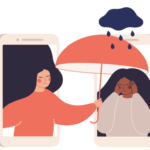WASHINGTON, D.C.—Sandra Mintz, RN, MS, a retired nurse navigator with Children’s Hospital Los Angeles, once cared for a girl with lupus, who was diagnosed at age 10. The patient’s mother recalled the time, shortly after her daughter’s diagnosis, when she was trying to define her role in the girl’s care.
“I found myself wanting to be able to help and do more than just giving her medicine,” the woman said in a message played at ACR Convergence 2024. She had grown up using natural medicines and was hoping to help her daughter’s symptoms by offering her fruits and vegetables, and she told her doctor about her wishes.
“He listened and asked me to give him examples of what I was thinking to use,” the mother said. “I was very surprised that he did not reject my idea.” The doctor gave her some guidance and welcomed her participation. That helped get the doctor-family relationship off to a good start, the woman recalled.
Ms. Mintz discussed the interaction in her ARP Keynote lecture on the importance of empathy and trust-building between doctors and their rheumatology patients—factors that are often overlooked but that can have important reverberations through a patient’s medical experience and quality of life.
The Human Experience 2030 report from The Beryl Institute, a community of medical professionals and patient advisors for improving the experience of healthcare, outlined three main components in its vision for improving this dynamic, Ms. Mintz said. Three main transformations, the report noted, need to take place: 1) Moving from consumerism to a patient partnership between patients and providers; 2) using real-time data and analytics to deliver tailored, personalized care; and 3) addressing systemic challenges, such as workforce stress and community health, to make the healthcare system more resilient.1
Fostering Empathy
A cornerstone in these transformations is boosting empathy in healthcare, Ms. Mintz said.
“Empathy in healthcare goes beyond addressing physical symptoms—it’s about connecting with our patients’ emotional and psychological experiences,” she said. “When providers, caregivers and support staff practice empathy, it builds trust. It strengthens relationships and improves our health outcomes.”
The reason is simple, she suggested. When patients feel like they’re being heard and understood, they’re more likely to share what they’re feeling in the way of symptoms and other concerns, and this helps with improving diagnoses and the care that’s provided.2




